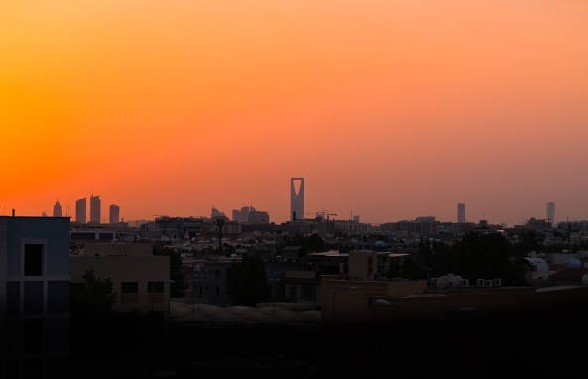Foreign investment surges even as quarter-on-quarter pace slows, unemployment hits lowest level since pandemic years.
Saudi Arabia pulled in $5.9 billion in foreign direct investment during the first quarter of 2025, posting a solid 44% year-on-year jump despite a modest dip from the previous quarter. At the same time, unemployment figures show a notable downtrend, reflecting a maturing labor market amid the Kingdom’s continued economic reforms.
The General Authority for Statistics released the data on Sunday, pointing to growing investor confidence and an increasingly active workforce—both critical metrics for Saudi Arabia’s ambitious Vision 2030 plans.
A Closer Look at the Investment Surge
Compared to Q1 last year, when foreign inflows reached SAR 15.5 billion ($4.1 billion), this year’s SAR 22.2 billion ($5.9 billion) haul represents an eye-catching boost.
Still, there’s a dip if you look back just one quarter.
FDI fell 7% from Q4 2024, which brought in SAR 23.9 billion ($6.4 billion), a number buoyed by year-end infrastructure and tech deals. Officials, however, seemed unfazed, citing seasonal swings.
For perspective:
-
Q1 2025: SAR 22.2 billion ($5.9 billion)
-
Q4 2024: SAR 23.9 billion ($6.4 billion)
-
Q1 2024: SAR 15.5 billion ($4.1 billion)
So yes, the pace softened. But the broader arc is still pointing up.

What’s Driving the Investment Flow?
The biggest driver? Strategic reforms and liberalization efforts under Crown Prince Mohammed bin Salman’s Vision 2030 roadmap. That includes opening up key sectors like logistics, tourism, and renewable energy.
Several megaprojects—NEOM, the Red Sea Project, and Riyadh’s financial district—have also entered crucial execution phases. That’s attracted global players with cash to spare and an appetite for high-growth markets.
One senior Riyadh-based analyst noted bluntly, “Saudi isn’t just a place to pump oil anymore. It’s becoming a place to pump capital.”
Labor Market Tells a Parallel Story
If the investment figures grabbed headlines, labor statistics told an equally compelling tale. The Kingdom’s jobless rate fell to 7.8% in Q1 2025, down from 8.5% in the previous quarter.
That’s the lowest reading in several years and a sign that private sector hiring is finally picking up speed.
Here’s how it breaks down:
| Group | Q4 2024 (%) | Q1 2025 (%) |
|---|---|---|
| Overall | 8.5 | 7.8 |
| Saudi Nationals | 8.4 | 7.6 |
| Males (Saudis) | 5.1 | 4.7 |
| Females (Saudis) | 14.3 | 13.0 |
That decline—especially among women—is something policymakers have been chasing for a while now.
Youth Still Struggling, But Showing Up
Not everything in the labor market is sunny, though.
The majority of Saudi job seekers are in the 20–29 age bracket. This group is energetic, ambitious, and educated—but still finds itself battling barriers, especially in high-paying or specialized roles.
Most job seekers reside in five key provinces:
-
Riyadh
-
Makkah
-
Eastern Province
-
Aseer
-
Qassim
The mismatch between graduate expectations and market demand lingers. It’s a problem many economies face, but one that Saudi officials say they’re targeting via training initiatives and public-private partnerships.
Female Participation Continues Climbing—Slowly
The numbers for female labor force participation rose slightly, now standing at 35.4%, while male participation remains higher at 66.6%.
It’s still a steep hill. But 10 years ago, those figures were nearly half for women.
“Women entering the workforce isn’t a trend—it’s a transformation,” said an HR director at a Jeddah-based manufacturing firm. “We’re hiring them not just for compliance, but because they’re damn good at what they do.”
Short-Term Softness or Long-Term Signal?
Some skeptics are watching the quarter-on-quarter decline in FDI and asking whether investor enthusiasm is already tapering off. After all, rising global interest rates and geopolitical friction could cool flows in 2025.
But others argue that short-term fluctuations are expected in a country still repositioning itself economically and politically.
“Rome wasn’t built in a day, and neither is a diversified Gulf economy,” one foreign banker told us. “The trendline is still bullish.”
Realignment or Reality Check?
The latest data shows that while the Kingdom still depends heavily on oil revenue, it’s actively—and effectively—laying bricks for a post-oil future.
FDI growth, falling unemployment, and rising female labor participation suggest reforms are taking hold. That said, the coming quarters will test how durable this momentum is.
If job creation stalls or capital dries up, the optimism could fade. But for now? Investors are still buying the story.
